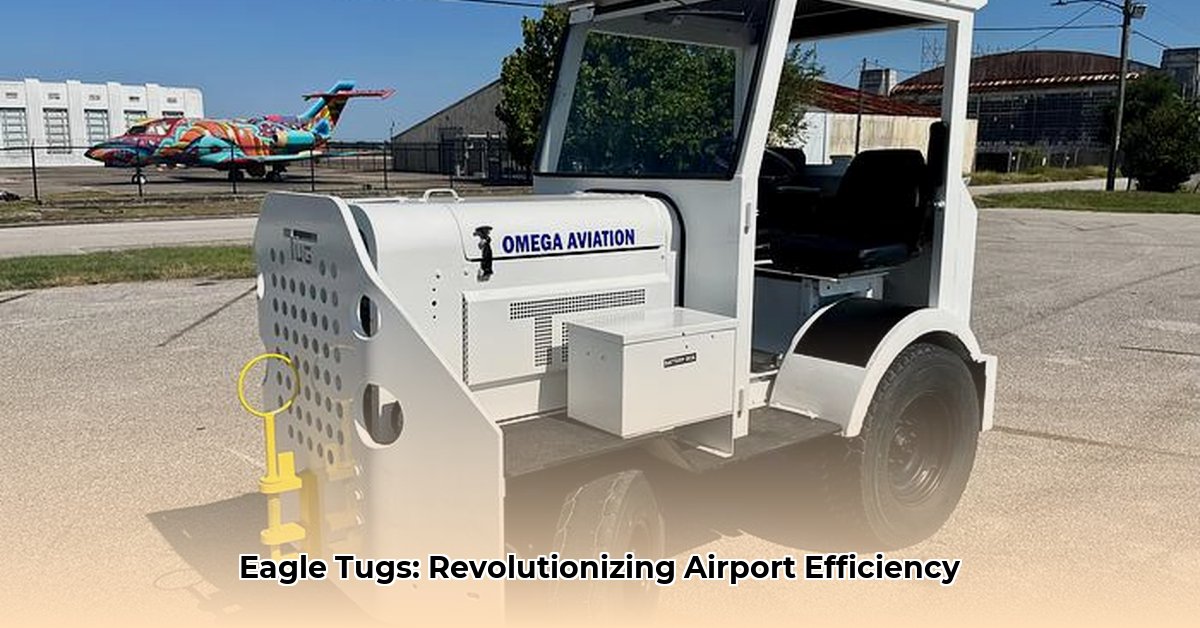
Airport Tugs and Tractors: A Market Overview
Airport tugs and tractors are indispensable for efficient aircraft handling, moving aircraft swiftly and safely across the tarmac. This market encompasses a wide range of vehicles, varying in size, power source (diesel, electric, or hybrid), and towing capacity. The choice of tug or tractor depends on factors such as aircraft size, airport layout, budget, and environmental concerns. How do various manufacturers stack up against each other, and how are technological advancements shaping this critical sector? This article delves into these questions, focusing on a key player: Eagle Tugs.
Types of Airport Tugs and Tractors
Airport tugs and tractors are categorized primarily by their power source and towing capacity. Diesel-powered models are common, offering high power and long operational ranges. However, the industry is witnessing a significant shift toward electric tugs, driven by environmental concerns and potential long-term cost savings. Hybrid options are also emerging, blending the benefits of both power sources. Smaller tugs handle lighter aircraft, while heavier-duty models are designed to move large passenger or cargo aircraft.
Technical Specifications and Comparisons
A detailed comparison requires extensive data on specific models from various manufacturers, including towing capacity, turning radius, engine power (for diesel models), battery capacity (for electric models), and operational range. This data would be presented in a tabular format for easy comparison. (Note: This section requires further data collection to populate the table.)
Eagle Tugs: Market Position and Product Offerings
Eagle Tugs, a prominent manufacturer in this field, presents a diversified range of products catering to various needs. Key product lines include the TT series (diesel), eTT series (electric), and the heavy-duty XM/XL series (diesel). Each series offers different towing capacities and features, reflecting the company's strategy to service diverse clients.
What is Eagle Tugs' actual market share? Independent verification of their self-proclaimed market leadership is necessary. Are their claims of superior performance substantiated by independent testing and verifiable data? Further investigation is required to assess their true market position compared to competitors.
Environmental Impact and Sustainability: Electric vs. Diesel
The environmental impact of airport ground support is increasingly under scrutiny. Diesel tugs contribute to greenhouse gas emissions and noise pollution. Electric tugs present a cleaner alternative, but their total cost of ownership (TCO) necessitates careful analysis. Key factors include battery life, charging infrastructure requirements, and maintenance costs. Is the long-term TCO favorable for electric models despite their higher upfront price? A detailed comparative study, considering life cycle analyses and operational conditions, is crucial for informed decision making.
Do environmental regulations influence the purchasing decisions of airports? Are incentives available for adopting electric models?
Future Trends and Challenges
Technological advancements, evolving environmental regulations, and increasing demand for sustainable airport operations are pivotal factors shaping the future of this industry. Advancements in battery technology, alternative energy sources, and autonomous systems are likely to transform the market in the coming years. How will Eagle Tugs and their competitors adapt to these changes? What are the potential challenges they face? A strategic foresight into technology, regulation, and the overall market demand will be needed to project the future of this sector accurately.
Conclusion
The airport tug and tractor market is dynamic and complex, influenced by technological developments, environmental regulations, and the quest for operational efficiency. Eagle Tugs, as a major player, needs thorough evaluation to assess its market position and the true performance of its product lines. Comparative analyses, independent verification of performance claims, and a strong consideration of Total Cost of Ownership – including environmental costs – are critical for understanding the current landscape and predicting the future trajectory of this essential sector. Further research, including market data analysis and independent testing of various models, is crucial to fully characterize the market and the competitiveness of Eagle Tugs.